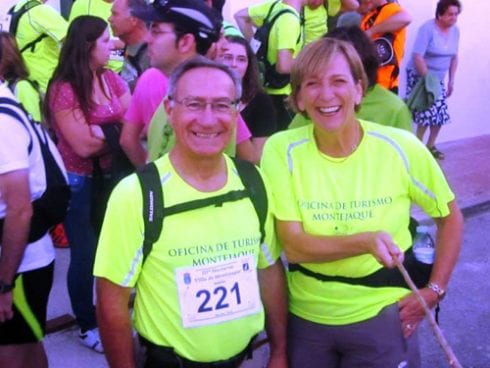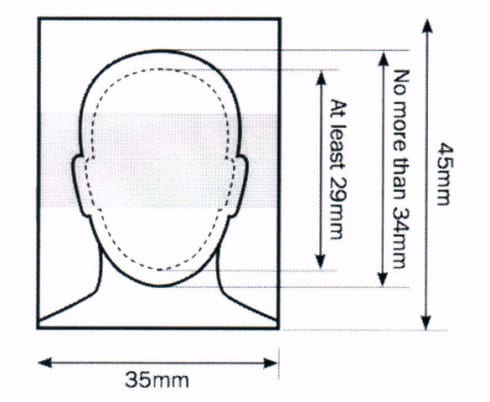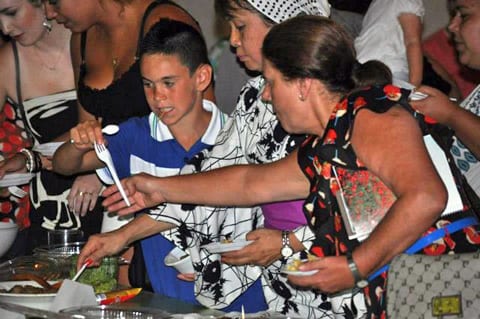After four lessons to learn the ‘sevillana’ dance, I think I have finally mastered the steps. I’d been muddling my paso with my pasada, and turning right when I should have been turning left.
Now I discover that the hand movements are more important to get right than the feet.
SHALL WE DANCE?
ONE of my new year’s resolutions was to learn how to dance flamenco, and I was even more inspired to do so after watching a live performance in nearby Ronda. I asked my girlfriend Nancy to join me, and we persuaded Alejandra (who is in the second year of studying flamenco at a seven-year university course) to give us a two-hour lesson every Friday night. Our goal was to dance at the May feria in the village.
From the live performance I had seen, I’d assumed you just sort of stamped your feet a lot and waved your arms slowly in the air, making flying-bird movements with your fingers. I was wrong.
First we had to get the arms right. No bent elbows; we had to make a circle of our arms in front of our bodies.
“Imagine you’re holding a fat man,” I said to Nancy.
Alejandra made both of us lower our arms.
“A short, fat man,” I amended.
Once we’d mastered turning our wrists and hands clockwise and anti-clockwise, fingers splayed (but not too much), Alejandra started teaching us the steps.
After eight hours of lessons, we finally had the routine down pat. The first of the four sevillana dances (i.e. the one we were learning) is broken into thirds:
First third: 5 pasos de sevillana (standard sevillana steps); 1 pasada (standard passing step)
Second third: 1 paso; 4 esquinas (corners … a bit like country and western dancing); 1 pasada
Third third: 1 paso; 4 pasadas; 1 vuelta izquierda (a single turn to the left); cierre (grand finish).

We had to practise during the week, as Alejandra was concerned that we were always too busy concentrating on counting out our steps …
“Ok, that’s five of those I’ve done now; it’s time to do one of these, one of those, and four of the others …”
The whole routine lasted about 60 seconds. Both Alejandra and Nancy were concerned that my ‘pasadas’ were rather large and sweeping … “You will need the whole village square to yourself at the feria,” said Alejandra. I therefore resorted to wearing a very tight skirt to practices, so that I could keep my passing steps within four tiles of Nancy’s living room, rather than sweeping my way across eight of them.
“Right,” said Alejandra on our fifth lesson: “Now we are going to combine the steps with the arm movements.”
Ha! Our co-ordination went out of the window. “Don’t worry,” said our patient teacher; it’s the arm movements that spectators will notice, so it doesn’t matter what you’re doing with your feet.”
What! After eight hours of lessons (and a quick practice every night before I got into bed), I didn’t really have to worry about whether my steps were accurate?
Still, as that old television programme said: “It will be all right on the night”. And it was. Despite the cold and the rain at the feria on May 20, Nancy and I performed what we considered was a creditable flamenco; and I danced it again with a couple of the local ladies – making sure that my arm movements were fantastic and not worrying about where my feet were going.
However, according to Tony Bryant on the website http://www.andalucia.com, “The sevillana is not flamenco, although today it is performed by flamenco artists who give it that special flamenco touch. It is performed to a strict 3 / 4 rhythm and will be danced by pairs or groups of people, and the dance will be choreographed to a pre-established routine, all of which goes against what the true flamenco dance is all about.”
Only now have I discovered that I’m not dancing flamenco after all.









